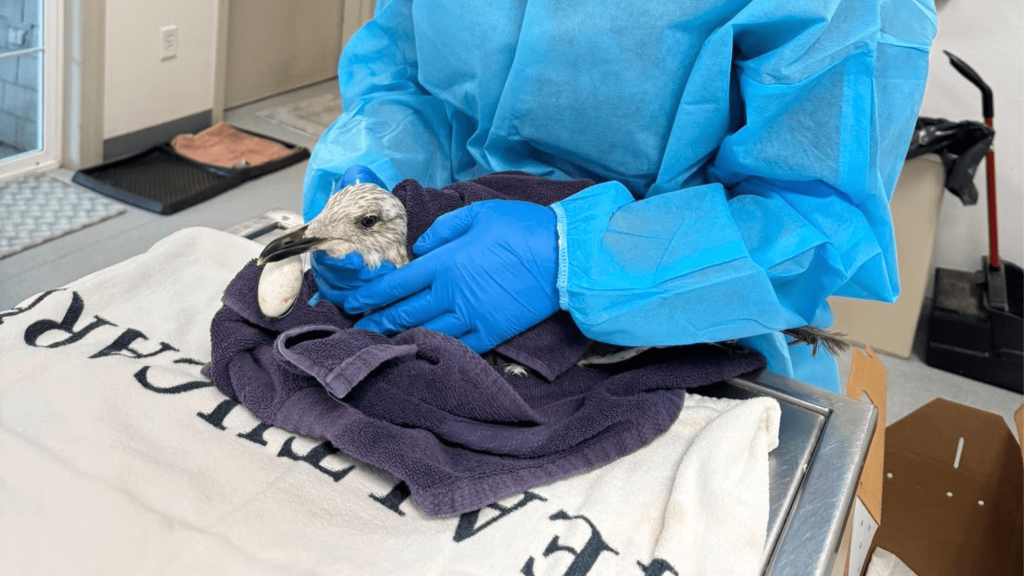A young seagull found in Cape Cod bit off a bit more than he could chew. The veterinary team at the New England Wildlife Center recently removed a large fishing hook from the bird’s GI tract. It’s likely that the bird thought that he was getting an easy meal courtesy of a fisherman’s catch, but swallowed the bait along with the hook and tackle.
The lesser black backed gull (Larus fuscus) was found in Cape Cod with a bobber hanging out of its mouth. Injuries or death due to improperly discarded fishing gear is a serious matter. Birds, fish, and marine mammals can accidentally eat or get tangled in discarded lines.
The X-rays on this gull indicated that the hook firmly attached to the line in his mouth. The hook’s barbed tip had even made its way through the stomach lining and into the body cavity.
“The occurrence of gulls with hooks are actually very common,” New England Wildlife Center veterinarian Dr. Priya Patel tells Popular Science. “We frequently see the birds when the hook is still in their mouth or neck, so it’s easier and safer to get it out. Not many gulls that swallow hooks completely like this one survive long enough where surgery is an option.”
Unlike humans, birds have a solid keel plate bone instead of a sternum. It offers excellent protection for their internal organs and serves as a type of scaffolding for their large flight muscles. However, this keel plate can also make surgeries like this one incredibly difficult since it covers a good part of the stomach.

“The most challenging part was making sure when we entered the body cavity exactly where the hook was located so we didn’t have to make a big incision,” says Patel. “Birds have an intricate respiratory system containing air sacs that are distributed around the body cavity and to access the stomach you have to cut through these air sacs. We didn’t want to do more damage than necessary to find the hook. It’s because of this that this type of surgery in birds is risky.”
Using X-rays and a veterinary endoscope, Patel was able to get a good visual on the hook so that she could make the incision right at the correct spot. Then, the team clipped and removed the hook and gently pulled the remaining fishing line out through the bird’s mouth.

“With a hook this large there is usually a lot of internal damage that also occurs,” says Patel. “This gull got very lucky!”
Within just a few hours, the gull was standing up and vocalizing (gulls certainly do love to squawk). There were no signs of compilations such as internal bleeding.
“Birds are very fast healers so after a week the incision had healed and we were able to move him to an outdoor enclosure where he could finish out his medication course,” says Patel.
The gull has since been released into the wilds of eastern Massachusetts.
When fishing, be sure to remove extra lines before you leave, watching out for gear that may have gotten snagged on tree branches, submerged vegetation, or logs. If you happen to see any stray gear, safely remove it from the water and discard it in a secure container.


